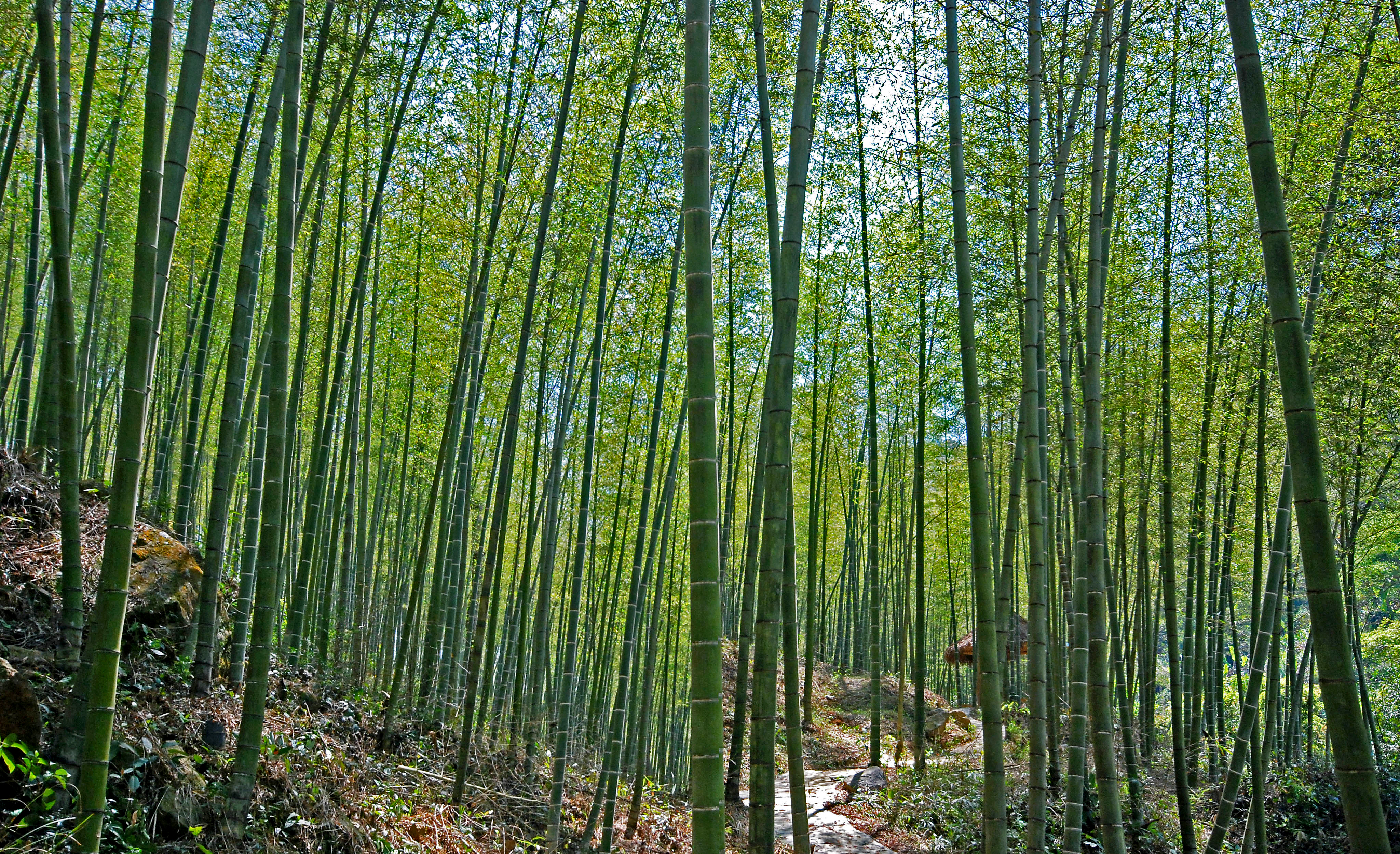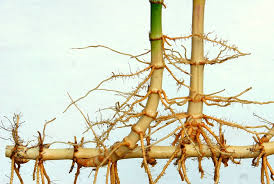I was recently in Europe, and talked with different people about bamboo. Many see bamboos as a threat, and talk about the invasiveness of bamboo. I wonder how big a threat this is.
Bamboos are members of the grass family, and there are 1250 different species. Like many grasses, bamboos are perennials with a rhizomatous growth habit. The woody bamboos, which make up the vast majority of bamboo diversity, are classified into two large groups, the temperate woody bamboos and the tropical woody bamboos.
The temperate woody bamboos occur mainly in China and Japan, and most are characterized by running rhizomes, and relatively long flowering cycles, often on the order of 60 or 80 to 120 years. The Chinese Moso bamboo (Phyllostachys edulis) is one of the best known temperate woody bamboo species.
The tropical woody bamboos occur in tropical and subtropical zones in Central and South America, Africa, Asia and Australia. With few exceptions, they have clumping rhizomes and their flowering cycles range from 7 to 60 years.
In general, when bamboos do flower and produce seed, most of the seed falls near the parent plants. Much of the seed may be eaten by birds or rodents, but some will germinate and reestablish the clump. Although many bamboos have small bristles adjacent to their seeds, which may allow animals to accidentally transport them, this is not a very effective dispersal mechanism. Studies reported from USA suggest that dispersal away from the parent population is a relatively rare event.
Most temperate woody Bamboos reproduce usually by rhizome growth. Running bamboos may extend their rhizomes from a few centimetres to several metres in a growing season, and this is often considered invasive behavior. It is also possible that rhizome pieces could break off along river banks during floods or heavy rains and be transported downstream, but this type of dispersal is rare.
The European Union has recently agreed a legislative text on Invasive Alien Species. The text, published in the Official Journal of the European Union on 4 November 2014, is in the form of an EU Regulation (Regulation 1143/2014), and becomes immediately enforceable law in all EU Member States on 1st January 2015. Unlike EU Directives, EU Regulations become national law without having to be transposed.
The backbone of the legislation is the list of harmful invasive species (a ‘black list’ approach), namely ‘‘Invasive Alien Species of Union Concern,’’ selected only among species that are alien to the EU and that are identified as invasive through a detailed risk assessment.
While the Regulation at this stage only lists a small number of species, there is concern about bamboo. Personal communication with focal persons in DG Environment in Brussels and colleagues in Headquarters of the International Union for Conservation of Nature (IUCN) in Switzerland made it clear that Europe is worried about the potential invasiveness of certain bamboo species.
They made no differentiation between different bamboo species, and as a result all bamboos are considered as a threat. This is not right, as has been pointed out by the American Bamboo Society. They issued a statement in 2012 that says that bamboos generally have low potential for invasiveness due to their rare flowering, but recognizes that some running bamboos can be aggressive spreaders and form large stands if left to their own devices.
The American Bamboo Society concludes that in almost every situation where bamboos are problematic, especially in urban and suburban settings, it is because people have not planted them properly, have not maintained them properly, or have not disposed of them properly.
Yet, the United States Department of Agriculture (USDA) has a species profile for two bamboo species under its list of invasive species. USDA warns that this is not a list of all invasive plant species, nor does it have any regulatory implications, and the profiles are provided as an educational informational tool. The list includes Phyllostachys aurea (golden bamboo) and Nandina domestica (sacred bamboo). The US National Park Service list the following three species as invasive species: Common bamboo – Bambusa vulgaris; Golden bamboo – Phyllostachys aurea; and Arrow bamboo – Pseudosasa japonica.
Interestingly, Australia is one of the most vigilant countries against invasive species, but it has no bamboo species listed in its list of Weeds of National Significance.
The contradictions in USA and the concerns expressed in Europe show the need for clarity. It is without question that the majority of bamboo species are not considered invasive, but some species may be a cause for concern.
There is a lot of interest in the Global South to develop bamboo resources, and one approach to expanding existing bamboo cover is to introduce exotic species. Without clear advice on the risk of invasiveness and guidelines on management of bamboo resources there is a possibility that we are introducing future problems.
I would be interested in your views.



The Botanical Society of Britain and Ireland would have some answers – their system of recording on a 2×2 km grid and production of County Floras documents all species in the wild. A recent ‘Flora of County Limerick’ (SCP Reynolds, 2013) lists Sasa palmata as a rare escape from cultivation, established in one location. Her ‘Catalogue of alien plants in Ireland’ (2002) lists 9 species, mostly relics of cultivation, but several well naturalised. There are comparable data for Britain. Julian Reynolds
Even in tropical regions there are “invasive bamboos” with running rhizomes e.g., Guadua weberi. Also, Phyllostachys aurea is considered a potential problem due to its running habir. So is moso.